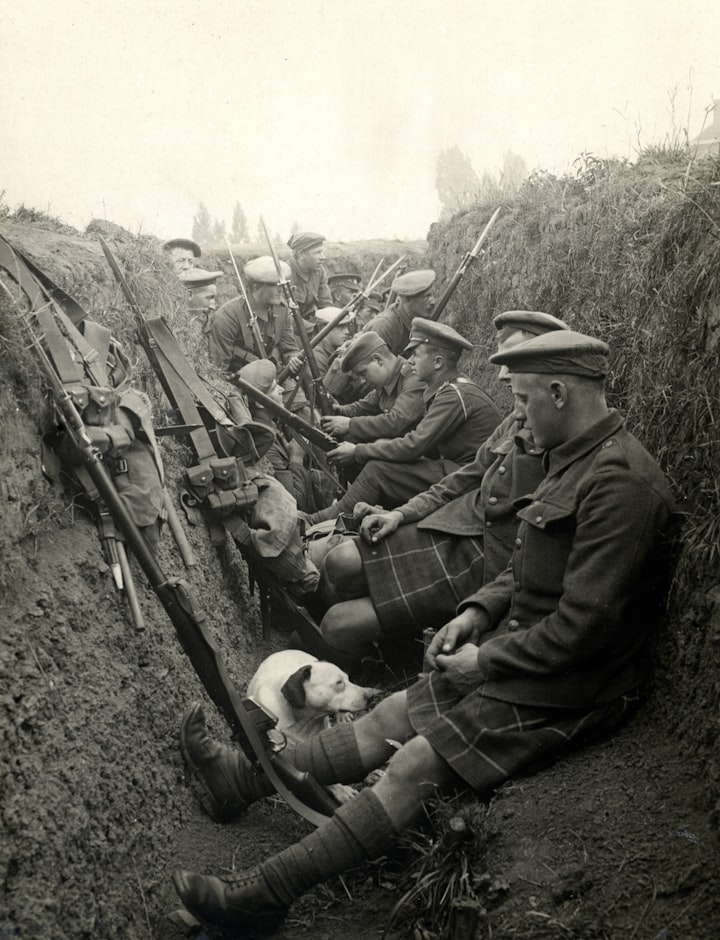WORLD WAR 1{THE GREAT WAR}
"The Great War: Unveiling the Global Conflict"

World War I, also known as the Great War, was a global conflict that took place from 1914 to 1918. It involved many of the world's major powers at the time, primarily divided into two opposing alliances: the Allies (including France, Britain, Russia, and later joined by the United States) and the Central Powers (including Germany, Austria-Hungary, and the Ottoman Empire).
The war began on July 28, 1914, with the assassination of Archduke Franz Ferdinand of Austria-Hungary by a Serbian nationalist. This event triggered a series of diplomatic and military actions that eventually led to the outbreak of war. The initial fighting took place in Europe, but the conflict quickly spread to other parts of the world, including Africa, the Middle East, and Asia.
World War I was characterized by trench warfare, where opposing armies dug elaborate systems of trenches to protect themselves from enemy fire. The war involved massive casualties and stalemates along the Western Front, with both sides suffering heavy losses in futile attempts to break the deadlock.
New weapons and technologies, such as machine guns, artillery, tanks, and poison gas, were introduced during this war, resulting in unprecedented levels of destruction and loss of life. The war also witnessed the first large-scale use of aircraft for reconnaissance and bombing missions.
In 1917, the United States entered the war on the side of the Allies, providing a significant boost to their military capabilities. Over time, the Central Powers started facing internal dissent and military setbacks. In 1918, the Allies launched a series of offensives that eventually led to the collapse of the Central Powers.
On November 11, 1918, an armistice was signed, effectively ending the fighting. The Paris Peace Conference in 1919 resulted in the signing of the Treaty of Versailles, which formally ended the war. The treaty imposed heavy reparations on Germany, redrew national borders, and created the League of Nations, an international organization aimed at maintaining peace and preventing future conflicts.
Here are some key points about World War I:
Causes: The war was triggered by a combination of complex factors, including alliances between nations, imperial rivalries, nationalism, and militarism. The assassination of Archduke Franz Ferdinand of Austria-Hungary in June 1914 was the immediate event that led to the outbreak of the war.
Central Powers and Allies: The war involved two main opposing alliances. The Central Powers consisted of Germany, Austria-Hungary, the Ottoman Empire, and Bulgaria. The Allies, later known as the Allied Powers, included France, Britain, Russia, Italy, and eventually, the United States.
Trench Warfare: World War I is known for the extensive use of trench warfare, with soldiers digging elaborate systems of trenches for protection. The war on the Western Front, in particular, was characterized by static front lines and brutal trench warfare that resulted in a stalemate for much of the conflict.
New Weapons and Technology: World War I saw the introduction of new and devastating weapons, including machine guns, artillery, poison gas, and tanks. These technological advancements increased the scale and intensity of the conflict.
Global Conflict: Although the war started in Europe, it eventually spread to other parts of the world. The conflict reached the Middle East, Africa, and Asia, with various colonies and territories becoming battlegrounds.
U.S. Entry: The United States initially maintained neutrality but eventually entered the war on the side of the Allies in April 1917. The sinking of the British ocean liner RMS Lusitania by a German U-boat in 1915 and the interception of the Zimmerman Telegram, a secret German message proposing an alliance with Mexico against the U.S., were among the factors that influenced the U.S. decision to join the war.
Human Cost: World War I was one of the deadliest conflicts in history, resulting in millions of casualties. It is estimated that around 9 million soldiers and 7 million civilians lost their lives during the war.
Treaty of Versailles: The war officially ended with the signing of the Treaty of Versailles in June 1919. The treaty imposed heavy reparations on Germany, redrew national borders, and established the League of Nations, an international organization aimed at promoting peace and resolving disputes.
World War I had far-reaching consequences, shaping the geopolitical landscape of the 20th century and setting the stage for future conflicts. It led to significant social, political, and economic changes, and its unresolved issues and grievances played a role in the outbreak of World War II.
About the Creator
CHIMA DANIEL
CHIMA is a seasoned writer with a passion for history, armed with extensive research skills and a deep understanding of historical events, transporting readers to different eras and breathing life into long-forgotten tales.






Comments
There are no comments for this story
Be the first to respond and start the conversation.